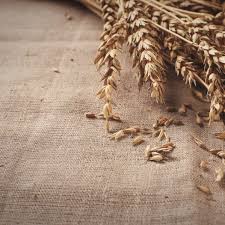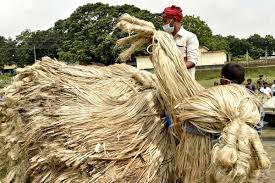In today's world, where environmental awareness is growing, it is important that we make a conscious choice of eco-friendly fabrics. Sustainable choices for fashion, and home interiors are a step forward for a greener earth. Jute is one such extraordinary eco-friendly fabric that has attracted a lot of attention for centuries. Jute textile in modern times has quickly become a top option for those who are environmentally sensitive thanks to its adaptability, sustainability, and several advantages. In this blog let us understand what jute is, the benefits of jute fabric and the different uses of jute in and around the house. Let us learn more about jute’s renewable and biodegradable nature so that we can also make a conscious greener choice.

image credit:- Modest Man
What is Jute?
Jute is a natural fibre extracted from the jute plant (Corchorus capsularis). It has a golden silky and shiny texture earning it the moniker ‘Golden Fibre’. Uses of jute can be seen in making a variety of products like jute textiles, jute bags, jute carpets and mats and rope. After cotton and wool jute is the world's third most important natural fibre.

Image Credit:- Textile Engineering
Origin of Jute
When we ask what is jute, we should also seek the origin and history of jute. The earliest evidence of jute cultivation can be dated back to the Indus Valley Civilization around 3300 to 1900 BCE. In the middle ages, this ‘Golden Fibre’ was a vital trade item between India and Europe and by the 19th century jute textile was one of the most important exports from India under the British East India Company.
Benefits of Jute
Jute is a natural fibre that is strong, durable, and biodegradable. Let us look at some benefits of jute.
- Strength & Durability: Jute is one of the strongest natural fibres which can be used for heavy-duty items like ropes, carpets sacks etc. It can withstand wear and tear.
- Biodegradability: Jute is 100% biodegradable making it perfect for environmentally conscious consumers.
- Sustainability: Jute is a sustainable crop requiring less water and pesticides.
-
Easy crop: One of the top benefits of jute is it is grown around the year. Jute can be harvested every 100 days.
Uses of Jute
Jute fabric is made from the natural fibre of jute and can be used in making a variety of products. Jute weaving products are eco-friendly and completely biodegradable.
- Textiles: Jute Textile industry is vast and makes industrial products like bags, sacks, and carpets.
- Rope: Rope and other cordage are the most common uses of jute.
- Geotextiles: Jute is used to make geotextiles, which are used to stabilize soil and prevent erosion.
- Carpet backing: Another common use of jute can be seen in making carpet backing.
- Insulation: Jute is used to make insulation.
- Packaging: Jute is used to make packaging materials, such as bags and sacks.
- Fashion: Jute fabric is used in various fashion items like jute sarees, jute bags etc
-
Home Décor: This eco-friendly fabric today is also used in home décor items like mats and carpets, table mats, garden planters etc
Social and Economic Benefits
Apart from being a sustainable material, jute textile also has vital social and economic benefits for the farmers.
- Provides Employment – Jute cultivation is a major source of income in rural communities.
- Exports – Jute textile industry contributes billions of dollars to the economy.
- Sustainability - Is jute biodegradable? Yes. Is jute sustainable? Yes. Farmers can grow it all year round. Jute crops require minimum pesticides making a good environmental impact.
Conclusion
Jute is an essential component of creating inclusive and sustainable communities since it promotes fair trade, creates employment opportunities, and aids in rural development. The use of jute and the benefits of jute are aplenty and this eco-friendly fabric has become one of the top choices of people for fashion and home décor.
FAQs on Benefits of Jute
What kind of material is jute?
Jute fabric is made from the natural fibre extracted from the jute plant. It is one of the strongest fibres in the world and jute textile is used for various industrial purposes and also used in home décor.
Is jute a fabric or fibre?
Jute is a fibre extracted from the jute plant. This long and shiny fibre is processed and used to make jute fabric which is an eco-friendly fabric.
What are the growing conditions for jute?
Jute plantation requires 160-200 cm of yearly rainfall and temperatures more than 25 °C with relative humidity. They grow well in the Gangetic River basin in India.
Which home decor products are made from jute?
Uses of jute can be seen in various home décor items like carpets, rugs, planters, table mats, lamps and lighting etc.
Is jute a biodegradable material?
Jute is an eco-friendly fabric and completely biodegradable and recyclable making it environmentally friendly.
 Verified Purchase
Verified Purchase



































































































































































































Leave a comment (all fields required)